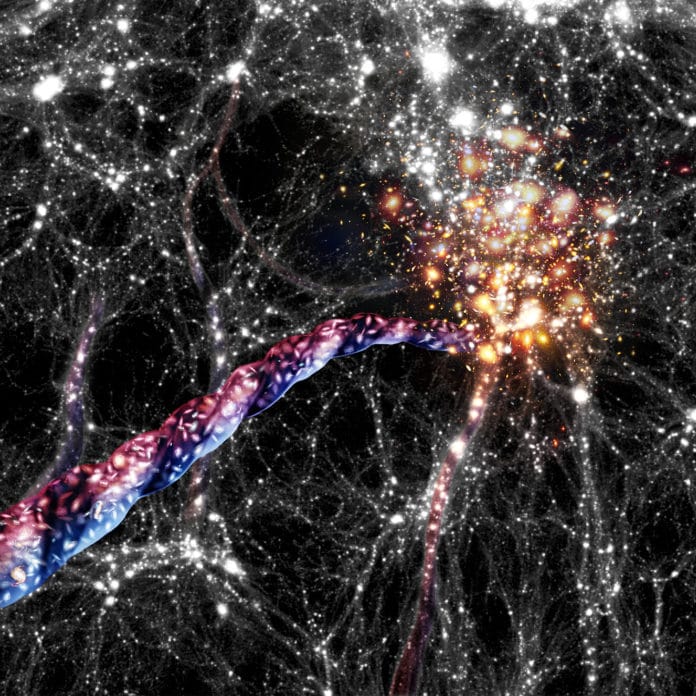Galactic filaments are the largest known structures in the Universe, with lengths of hundreds of millions of light-years. They act as a bridge of galaxies and dark matter that connects clusters of galaxies.
Using data from the Sloan Digital Sky survey – a survey of hundreds of thousands of galaxies, astronomers mapped the motion of galaxies in cosmic filaments. Doing so, they found that filaments of galaxies are themselves spinning. The wonderful fact is: they spin on the scale of hundreds of millions of light-years.
Astronomers have never seen a rotation on such enormous scales: the largest rotation in the Universe.
Noam Libeskind, initiator of the project at the AIP, said, “Despite being thin cylinders – similar in dimension to pencils – hundreds of millions of light-years long, but just a few million light-years in diameter, these fantastic tendrils of matter rotate.”
“On these scales, the galaxies within them are themselves just specs of dust. They move on helixes or corkscrew-like orbits, circling the middle of the filament while traveling along with it. Such a spin has never been seen before on such enormous scales, and the implication is that there must be an as yet unknown physical mechanism responsible for torquing these objects.”
It remains a mystery how the angular momentum responsible for the rotation is generated in a cosmological context. In the standard model of structure formation, small overdensities present in the early Universe grow via gravitational instability as matter flows from under to overdense regions. Such a potential flow is irrotational or curl-free: there is no primordial rotation in the early Universe.
As such, any spin probably has generated as structures form, the cosmic web and filaments, specifically, are personally associated with galaxy formation and evolution. They also strongly affect galaxy spin, regularly controlling how galaxies and their dark matter haloes rotate. In any case, it’s anything but known whether the current comprehension of structure formation predicts that filaments themselves, being uncollapsed quasi-linear objects, should spin.
Noam Libeskind said, “Motivated by the suggestion from the theorist Dr. Mark Neyrinck that filaments may spin, we examined the observed galaxy distribution, looking for filament rotation. It’s fantastic to see this confirmation that intergalactic filaments rotate in the real Universe, as well as in computer simulation.”
The study implies that depending on the viewing angle and endpoint mass, filaments in the Universe show a clear signal consistent with rotation.
The study was conducted by astronomers at the Leibniz Institute for Astrophysics Potsdam (AIP), in collaboration with scientists in China and Estonia.
Journal Reference:
- Wang, P., Libeskind, N.I., Tempel, E. et al. Possible observational evidence for cosmic filament spin. Nat Astron (2021). DOI: 10.1038/s41550-021-01380-6
